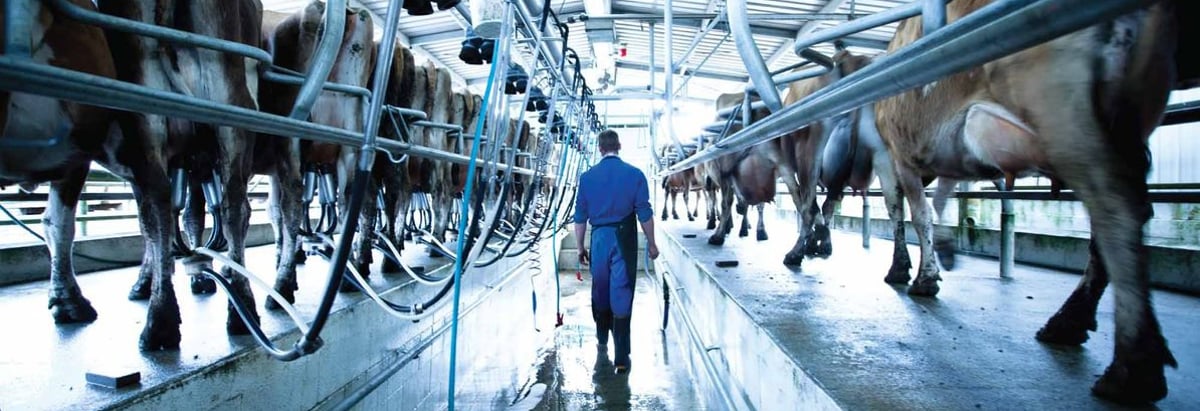- New Zealand
- /
- Food
- /
- NZSE:FCG
Examining Fonterra Co-operative Group Limited’s (NZSE:FCG) Weak Return On Capital Employed

Today we are going to look at Fonterra Co-operative Group Limited (NZSE:FCG) to see whether it might be an attractive investment prospect. To be precise, we'll consider its Return On Capital Employed (ROCE), as that will inform our view of the quality of the business.
First up, we'll look at what ROCE is and how we calculate it. Second, we'll look at its ROCE compared to similar companies. Then we'll determine how its current liabilities are affecting its ROCE.
What is Return On Capital Employed (ROCE)?
ROCE is a metric for evaluating how much pre-tax income (in percentage terms) a company earns on the capital invested in its business. In general, businesses with a higher ROCE are usually better quality. Ultimately, it is a useful but imperfect metric. Author Edwin Whiting says to be careful when comparing the ROCE of different businesses, since 'No two businesses are exactly alike.'
So, How Do We Calculate ROCE?
Analysts use this formula to calculate return on capital employed:
Return on Capital Employed = Earnings Before Interest and Tax (EBIT) ÷ (Total Assets - Current Liabilities)
Or for Fonterra Co-operative Group:
0.048 = NZ$695m ÷ (NZ$20b - NZ$5.8b) (Based on the trailing twelve months to January 2019.)
Therefore, Fonterra Co-operative Group has an ROCE of 4.8%.
View our latest analysis for Fonterra Co-operative Group
Is Fonterra Co-operative Group's ROCE Good?
ROCE can be useful when making comparisons, such as between similar companies. We can see Fonterra Co-operative Group's ROCE is meaningfully below the Food industry average of 11%. This performance is not ideal, as it suggests the company may not be deploying its capital as effectively as some competitors. Regardless of how Fonterra Co-operative Group stacks up against its industry, its ROCE in absolute terms is quite low (especially compared to a bank account). Readers may wish to look for more rewarding investments.
Fonterra Co-operative Group's current ROCE of 4.8% is lower than its ROCE in the past, which was 8.2%, 3 years ago. So investors might consider if it has had issues recently.

When considering ROCE, bear in mind that it reflects the past and does not necessarily predict the future. ROCE can be deceptive for cyclical businesses, as returns can look incredible in boom times, and terribly low in downturns. ROCE is only a point-in-time measure. You can check if Fonterra Co-operative Group has cyclical profits by looking at this free graph of past earnings, revenue and cash flow.
Do Fonterra Co-operative Group's Current Liabilities Skew Its ROCE?
Short term (or current) liabilities, are things like supplier invoices, overdrafts, or tax bills that need to be paid within 12 months. The ROCE equation subtracts current liabilities from capital employed, so a company with a lot of current liabilities appears to have less capital employed, and a higher ROCE than otherwise. To counter this, investors can check if a company has high current liabilities relative to total assets.
Fonterra Co-operative Group has total assets of NZ$20b and current liabilities of NZ$5.8b. As a result, its current liabilities are equal to approximately 29% of its total assets. This is not a high level of current liabilities, which would not boost the ROCE by much.
The Bottom Line On Fonterra Co-operative Group's ROCE
Fonterra Co-operative Group has a poor ROCE, and there may be better investment prospects out there. Of course, you might also be able to find a better stock than Fonterra Co-operative Group. So you may wish to see this free collection of other companies that have grown earnings strongly.
If you like to buy stocks alongside management, then you might just love this free list of companies. (Hint: insiders have been buying them).
We aim to bring you long-term focused research analysis driven by fundamental data. Note that our analysis may not factor in the latest price-sensitive company announcements or qualitative material.
If you spot an error that warrants correction, please contact the editor at editorial-team@simplywallst.com. This article by Simply Wall St is general in nature. It does not constitute a recommendation to buy or sell any stock, and does not take account of your objectives, or your financial situation. Simply Wall St has no position in the stocks mentioned. Thank you for reading.
About NZSE:FCG
Fonterra Co-operative Group
Fonterra Co-operative Group Limited, together with its subsidiaries, collects, manufactures, and sells milk and milk-derived products.
Good value with adequate balance sheet and pays a dividend.
Similar Companies
Market Insights
Community Narratives





